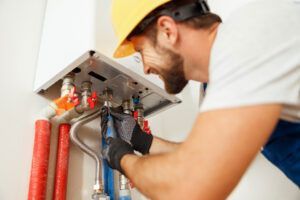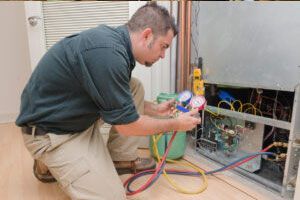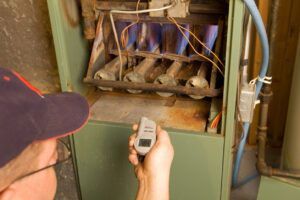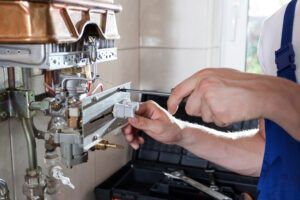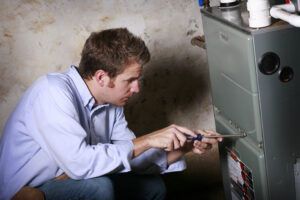DIY Heating Installation: Tips and Tricks for a Cozy Home?
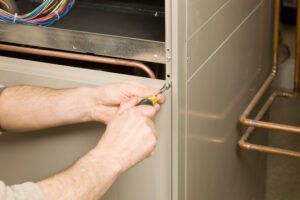
As the winter chill sets in, there’s nothing quite like the comfort of a warm and cozy home. But what if you could contribute to that cozy atmosphere yourself with a DIY heating system installation? Doing it yourself saves money and lends a sense of accomplishment. This blog will delve into a comprehensive guide to make your DIY heating system installation project successful, irrespective of your technical know-how. Gear up as we uncover ten handy tips to ease your heating installation process and ensure an efficient and warm-filled home all winter.
1. Know Your Heating System Options
Before you embark on the DIY heating system installation journey, it’s pivotal to understand the various options available. Each system has advantages and is suited for specific climates and home layouts. Furnaces are popular due to their efficiency and ability to warm large spaces quickly, making them ideal for colder climates. On the other hand, heat pumps are versatile and can serve as heating and cooling systems, making them suitable for moderate climates.
Lastly, radiant heating provides consistent and comfortable warmth, especially for homes with hardwood or tile floors. Invest time researching these systems and comparing their benefits, costs, and suitability for your home and regional climate. This initial step will help you choose the heating system that best aligns with your home’s heating needs and personal preferences.
2. Calculate the Heating Load
A key aspect of a successful DIY installation is accurately calculating the heating load of your home. This refers to the heat needed to maintain a comfortable temperature in your house. Several factors contribute to this calculation. Firstly, your home’s insulation: homes with better insulation retain heat more effectively, reducing the heating load. Secondly, your home’s square footage directly influences the heat needed for comfortable living. Lastly, your local climate plays a vital role. Colder climates naturally require a higher heating load. Accurate heating load calculations enable you to choose the right-sized heating system for your home, ensuring efficient operation and optimal comfort. This planning stage is crucial in avoiding the common pitfall of purchasing an incorrectly sized system which can lead to energy inefficiencies and increased running costs.
3. Safety First: Understand Local Codes and Permits
Before starting your DIY installation, it’s crucial to familiarize yourself with local building codes and obtain any required permits. These codes are established to ensure safety and quality standards, and non-compliance can lead to penalties or future complications with house insurance or resale. Ensuring you have the correct permits before starting the installation demonstrates your adherence to these standards, safeguards you against potential legal issues, and contributes to the project’s overall safety.
4. Gather the Right Tools and Equipment
A well-prepared toolkit is essential for a successful DIY heating system installation project. Begin by creating a checklist of necessary tools, including wrenches for tightening bolts, screwdrivers to open up panels, pipe cutters for adjusting pipe lengths, and a voltage tester to ensure electrical safety. These tools, within easy reach, will streamline the installation process and help you tackle any unforeseen hurdles more efficiently. Remember, a well-equipped handyman makes the job smoother, safer, and more precise.
5. Prepare the Workspace
To kickstart your DIY installation project, a well-prepared workspace is essential. Begin by thoroughly clearing the installation area of any obstacles that could hinder your movement or the installation process. This creates a safer work environment and minimizes the risk of accidental damage to your belongings. Also, ensure proper ventilation in the room where the heating system will be installed. Adequate airflow is vital not only for your safety during the installation but also for the efficient functioning of the heating system. A clutter-free and well-ventilated workspace lays the groundwork for a safer, more efficient installation process.
6. Install Programmable Thermostats
To enhance your home’s energy efficiency, consider installing programmable thermostats as part of your DIY installation. These innovative devices allow the customization of heating schedules to align with your everyday activities, thereby preventing energy wastage when heating is unnecessary. For instance, you can program the thermostat to lower the heat when you’re away from home or asleep. This smart use of technology conserves energy and reduces your utility bills, making programmable thermostats a sound investment for environmentally conscious homeowners.
7. Seal Ducts and Insulate
One of the most overlooked aspects of installation is properly inspecting and sealing ducts. Unsealed ducts can lead to significant heat loss, reducing the overall efficiency of your heating system. Therefore, meticulously inspect your ductwork for any signs of leaks or damage. Use foil-faced tape to seal gaps, ensuring the warm air travels unimpeded to its intended destination. Additionally, insulating your ducts can further prevent heat loss, maximizing the performance of your heating system. With well-sealed and insulated ducts, your home will be enveloped in consistent warmth, enhancing your comfort throughout the winter.
8. Ensure Proper Ventilation
If you opt for a combustion heating system, such as a furnace, ventilation becomes crucial to ensure the safe expulsion of combustion gases. Any failure to do so can result in a risky buildup of harmful gases within your home. Always adhere strictly to the manufacturer’s guidelines when installing the ventilation system. Depending on the specific system, this may involve the installation of flue pipes or other exhaust outlets to channel combustion gases to the outdoors. Proper ventilation guarantees safety and contributes to the efficient operation of your heating system.
9. Seek Professional Guidance When Needed
Despite the autonomy offered by a DIY heating installation, it’s crucial to remember that professional guidance is invaluable when faced with complex decisions or situations of uncertainty. If any aspect of the installation leaves you skeptical, don’t hesitate to consult with professionals. It’s better to seek advice than risk improper installation, potentially compromising your home’s safety and heating efficiency. By balancing your do-it-yourself spirit with professional expertise, you ensure the installation process proceeds smoothly and any potential issues are addressed promptly and effectively.
10. Test and Monitor Your System
Be sure to test your heating system thoroughly after the installation. Turn it on and observe its operation, paying particular attention to any unusual noises, odors, or signs of malfunction. Monitoring the system’s performance regularly can help identify potential issues early, facilitating timely maintenance and preventing long-term damage. Remember, a well-maintained heating system functions more efficiently and lasts longer, saving you from unexpected repair costs and ensuring a warm and comfortable home environment.
A DIY installation can be a rewarding and cost-effective project. By understanding local codes, gathering the right tools, preparing your workspace, and seeking professional advice, you can safely and efficiently install your heating system while enhancing your home’s comfort and energy efficiency.
If you need professional guidance or further assistance with your DIY installation project, don’t hesitate to reach out to us at Cyclone Heating & Air. Our team of experienced professionals is always ready to help. Call us today at 469-251-8720 for all your heating needs!
Get In Touch With Us!
Contact Us
We will get back to you as soon as possible.
Please try again later.
QUICK LINKS
SERVICE AREAS
Copyright © All Rights Reserved | Cyclone Heating and Air LLC | Sitemap



